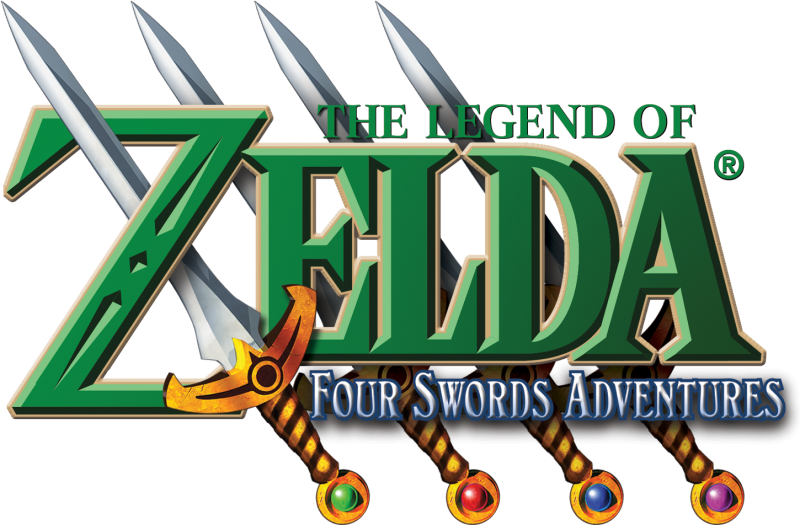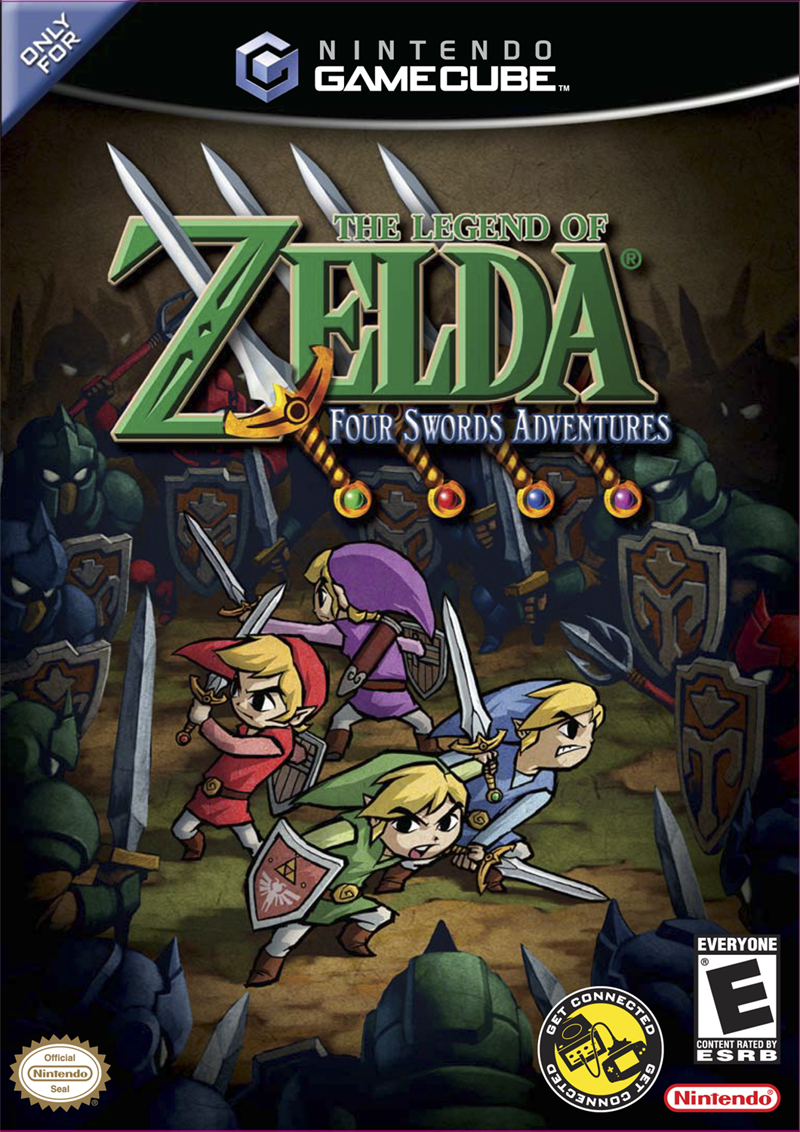The Legend of Zelda: Four Swords Adventures
Related | ||
| Release | ||
|---|---|---|
Platform | Date | |
| Credits | ||
Developer | ||
Producer | ||
Director | ||
| Guides | ||
Walkthrough | ||
| Media | ||
Gallery | ||

|
In-depth guide:
Four Swords Adventures Walkthrough |
The Legend of Zelda: Four Swords Adventures is a game for the Nintendo GameCube. It was released on March 18th, 2004 in Japan, June 7th, 2004 in North America, January 7th, 2005 in Europe, and April 7th, 2005 in Australia. Four Swords Adventures is the tenth installment in The Legend of Zelda series, and the second new Zelda game released on the GameCube.
Four Swords Adventures is unique for being one of only two games in the series to allow the player to control four separate Links at the same time. It is the second game in the series to have multiplayer. Each player (excluding during one player mode) is required to use a Game Boy Advance and link cable to connect to the Nintendo GameCube. During one player mode, the player can use a Game Boy Advance, or just a GameCube controller can be used and the Game Boy Advance screen will be displayed on the main television. There are two separate ways to play Four Swords Adventures: Hyrulean Adventure and Shadow Battle. Hyrulean Adventure will take the player through the main storyline and can be played by one player or by up to four players. Shadow Battle is a free-for-all multiplayer.
Along with using four different Links to complete the storyline, Four Swords Adventures changed many things in the typical Zelda formula. Each area of the game is separated into different levels. Levels do not connect with each other, and the player will have to leave the level to move to another area. Each level is then separated into three stages. Upon completing a stage, the player will then move to the next stage in the level. After completing the third stage and rescuing the Maiden trapped there, the player will then move to the next level. All levels are also able to be replayed as many times as needed, allowing the player to travel back and play through any stage or level they have completed.
Story
- Main article: Four Swords Adventures Story
Stages
Characters
Items
Enemies
Bosses
Graphics and Sound
The game's graphics style and music are directly based on the graphics and music of A Link to the Past. The graphics received enhancements in the form of overlaid 3D effects, other advanced 2D effects such as ripples, and a fluid, dynamic camera that could zoom in and out of the 2D image. The music, for the most part, is untouched - most of the music was directly taken from A Link to the Past, with a few different MIDI instruments; the new music created for Four Swords Adventures uses the same instruments. However, the graphics displayed on the Game Boy Advance use the same style as Four Swords, whose graphics style is partly based on that of The Wind Waker.
Trivia
- On the game disc of Four Swords Adventures, there is a file called smw.ast, which is a music file of the Special World theme from Super Mario World. The theme itself is a 16-bit remix of the original Super Mario Bros. theme. As the game in its current state exclusively uses MIDIs for music, it is unknown what smw.ast was going to be used for.
- Four Swords Adventures was Nintendo's last top-down Zelda game for home consoles for fifteen years, until the release of the Link's Awakening remake for Nintendo Switch in 2019.
Gallery
- Main article: Gallery:Four Swords Adventures
Screenshots
Videos
Four Swords Adventures Trailer
American Commercial
Japanese Commercial
Japanese Commercial





















































































